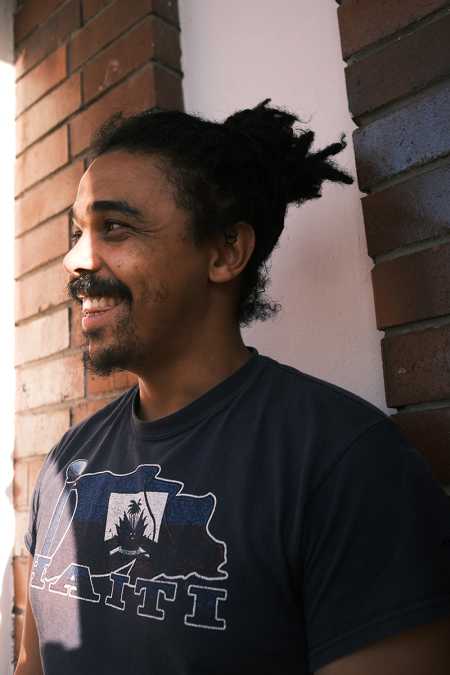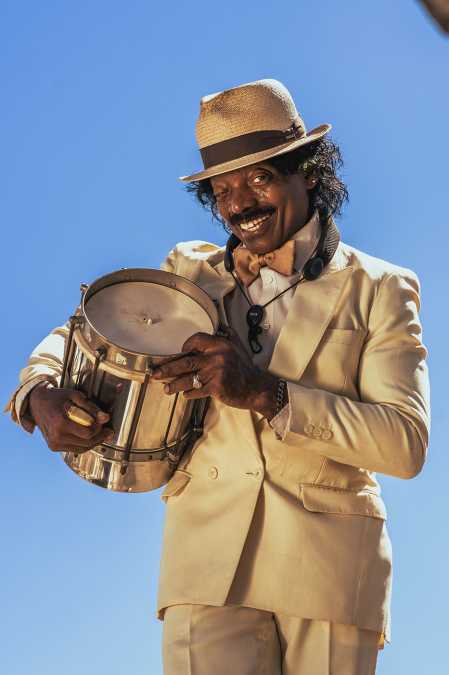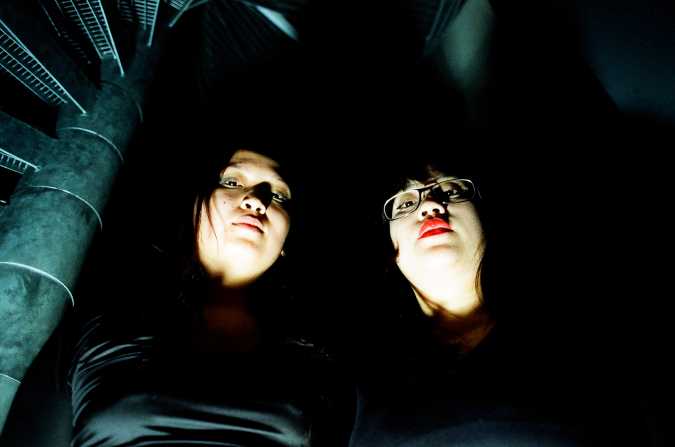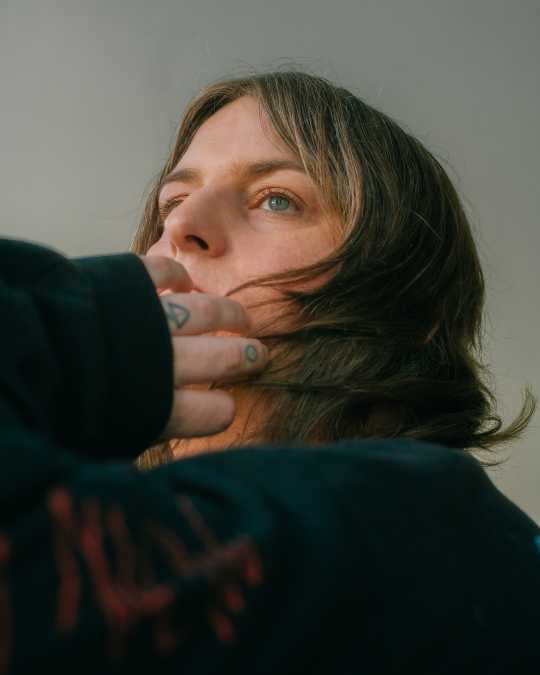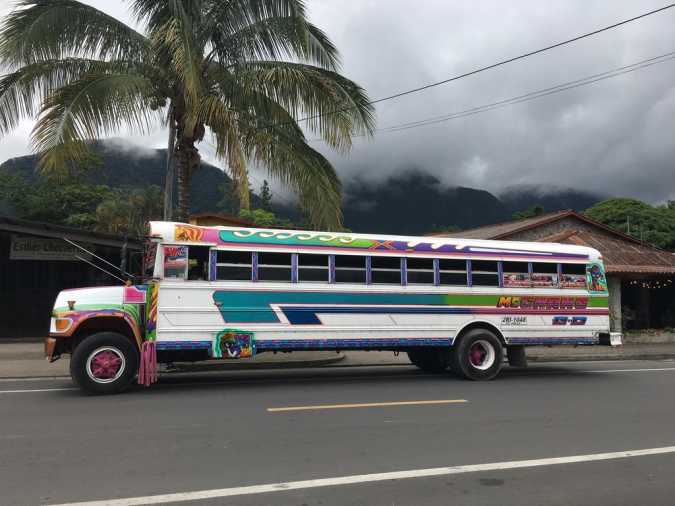Sandy Chamoun is a singer, performer, actor and sound artist based in Beirut. Her work draws from Arabic folk traditions and explores social and political themes. Following her performance with SANAM at Le Guess Who? 2023, she returns to the festival in 2025, presenting two special projects.
Ghadrغدر (curated by Amirtha Kidambi) sees Chamoun collaborate with sound artist and improviser Jad Atoui and composer, musician and programmer Anthony Sahyoun. The project clashes blazing electronics and distortion with vocals rooted in classical Arabic singing. Sawt El Doumouh صوت الدموع (commissioned by Mophradat) is a vocal-based project inspired by Cantu a Tenore, the Sardinian overtone throat singing tradition in collaboration with Anthony Sahyoun and Ali Hout.
Here, London based Palestinian writer, researcher and music manager Christina Hazboun talks to Sandy Chamoun about her artistic practice and the stories of how Ghadrغدر and Sawt El Doumouh صوت الدموع originated as well as developed over the years.
The force of the voice can be as powerful as an earthquake; it can imprint endless resonances on our memories and bodies, and can shake us to the core; touching our bodies and souls. The first time I heard Sandy Chamoun sing live was on the ominous night of February 5th 2023 at one of Beirut's multi-arts spaces; KED. With its industrial and raw architecture, the large venue trembled, and the earth quivered to the powerful vocals of Sandy Chamoun as she fronted the experimental band SANAM, with her musical colleagues singing of angels, awakening, poetry and agony to improvised rock, free jazz and noise.
That night, the trembling was so strong, not only because of sound and song, but because a magnitude 7.8 earthquake shook Lebanon and the Levante and left many homeless, quivering and swaying. Since that year, numerous forms of merciless, ruthless and violent events shook the Levante and none of us knew what the future held for us. Two years down the line, I sat down with Sandy Chamoun to hear about her latest conceptual project Sawt El Doumouh صوت الدموع which was conceived in 2023, but took many twists and turns, responding to lifechanging events. Since then, Chamoun has also worked on another project titled Ghadrغدر. Both projects will be performed live at Le Guess Who? 2025.
But before we unpack both projects, it might be good to introduce Sandy Chamoun's rich musical background to those who may not know of her diverse experience. Sandy Chamoun forged a solid space for herself by singing Arabic "classics" with iconic Beirut band Al-Rahel Al-Kabir (the Great Departed), bridging songs of satire with more traditional tarab (emotional pleasure or ecstasy induced by music) rooted in the more adventurous works of one of the Arab world’s leading musical revolutionaries; Sheikh Imam. "Sheikh Imam's works encompass an element of freedom which was not prevalent before his time" says Sandy Chamoun, reminiscing about her work pre-2020. Then came her first solo work Dreams of the Imagination, which Chamoun describes as "pure sounds that I like to bring together in my head."
These spontaneous experiments evolved further as Sandy Chamoun honed her vocal style with experimental and improv band SANAM inspired by a residency with Hans Joachim Irmler. "It was me and another six people, and most of the songs were improvised, but I didn't want to be categorized or fall into a stereotype" recounts Chamoun. This is where her collaboration with composer, musician, and programmer Anthnoy Sahyoun and sound artist and improviser Jad Atoui gave rise to Ghadrغدر. Playing with mayhem sonically, but also somatically and spiritually, the trio improvise with electronics and distortion to meld vocals through an innovative approach.
The presence of modular synth, guitar and voice are minimalistic elements that engulfed Chamoun with what she needed in order to experiment; "I always search for new techniques and horizons to go to new places that I have doubts about.
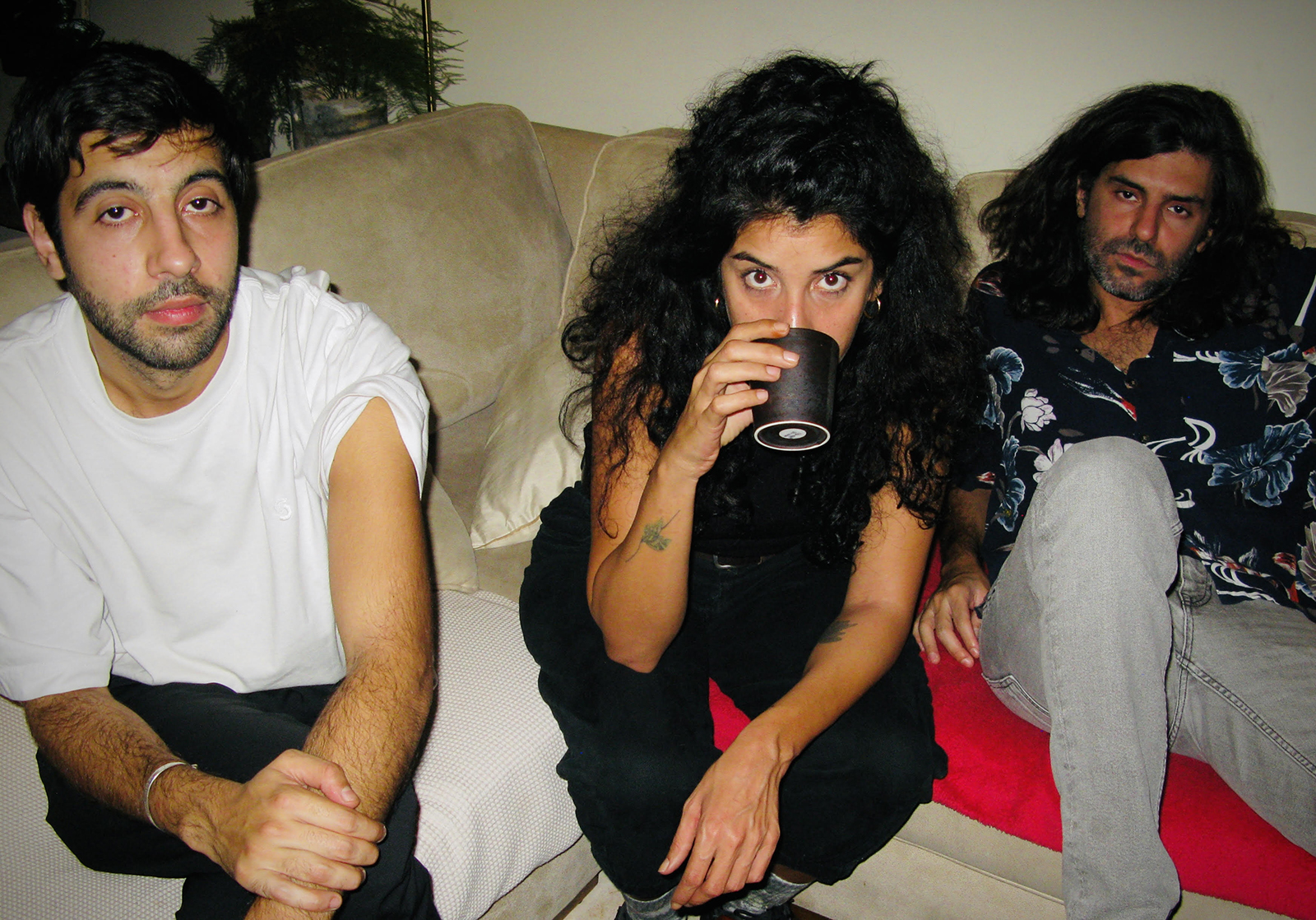
Working on a project collaboratively is completely different to when one works on a project on their own. This is where Sandy Chamoun had to put herself at the centre of her creative process to bring forth Sawt El Doumouh صوت الدموع (or Sound of Tears) where Chamoun wanted to feel different colours and places.
The original idea came from Chamoun's interest in the Sardinian polyphonic singing style of canto a tenore which originates in ritual songs to celebrate the victory of humans over nature. Chamoun was mesmerized by the idea of human victory over nature and started asking "What does it mean for humans to be victorious over nature?" This, in addition to her commitment to developing her vocal technique drove her to develop a whole project trying to achieve the polyphonic effects of the four voices usually found in canto a tenore: bassu, contra, boche and mesu boche. Mostly sung by men, this technique is hard to achieve by one individual and so Sandy Chamoun called on the brilliant mind of long standing collaborator Anthony Sahyoun to develop a special plug-in via Ableton’s Max to help her achieve the desired effect of amplifying, looping and modifying the human voice to ornament our surroundings. "Whenever we feel like we need a certain sound from my voice, we can amend it, and we achieve the desired effect. It transforms the voice to an instrument" explains Chamoun enthusiastically.
Chamoun had also invited long term collaborator Ali Hout; "Me and him worked together a lot before. We worked in theatre, and I love his sense of rhythm. In my opinion he is one of the best rhythm players whom we have, and we understand each other: his sense of rhythm is also very accurate, and he was able to deal with all the chaos that shrouded the project's creation" elaborates Chamoun.
The sound of tears, aka Sawt El Doumouh صوت الدموع was meant to take place in different places in Lebanon where Chamoun was hoping to gain inspiration from the sounds and voices of life and nature in five areas: South Lebanon, Beirut, north Lebanon, the Beqaa Valley and Mount Lebanon. "I couldn't go to most areas; neither physically nor psychologically" shares Chamoun with a tone of sorrow in her voice; "I was in Beirut, I went to the North, but I’m from the South, and when I go there, my feelings are bigger than me. It feels like time has stopped. There’s this emotional earthquake that stops you from proceeding and this feeling is real, because there’s something unnatural to what is happening."
The genocide had started at the time, and so both Chamoun and her project had to adapt to what was happening; "I couldn't focus and had to change so many things about the project. But also: what can you say during such a time? It all became a release point for me: instead of saying I’m angry or I’m sad, I started channeling my energy into my work."
One of the main concepts of the album is the victory of humans over nature, yet this seems as a paradox as we see the military industrial complex destroy nature. Unpacking the violence that we have all been witnessing through our screens seemed like an imperative while creating the songs. "If we ask ourselves how humans rose above nature and then we see what has been happening throughout the last two years, it all feels like humans are excelling in the arts of killing and destruction; ending life before its time." shares Chamoun pensively. Besides the tens of thousands killed, displaced and detained there were the machines and diggers burying into the mountains and lands of South Lebanon.
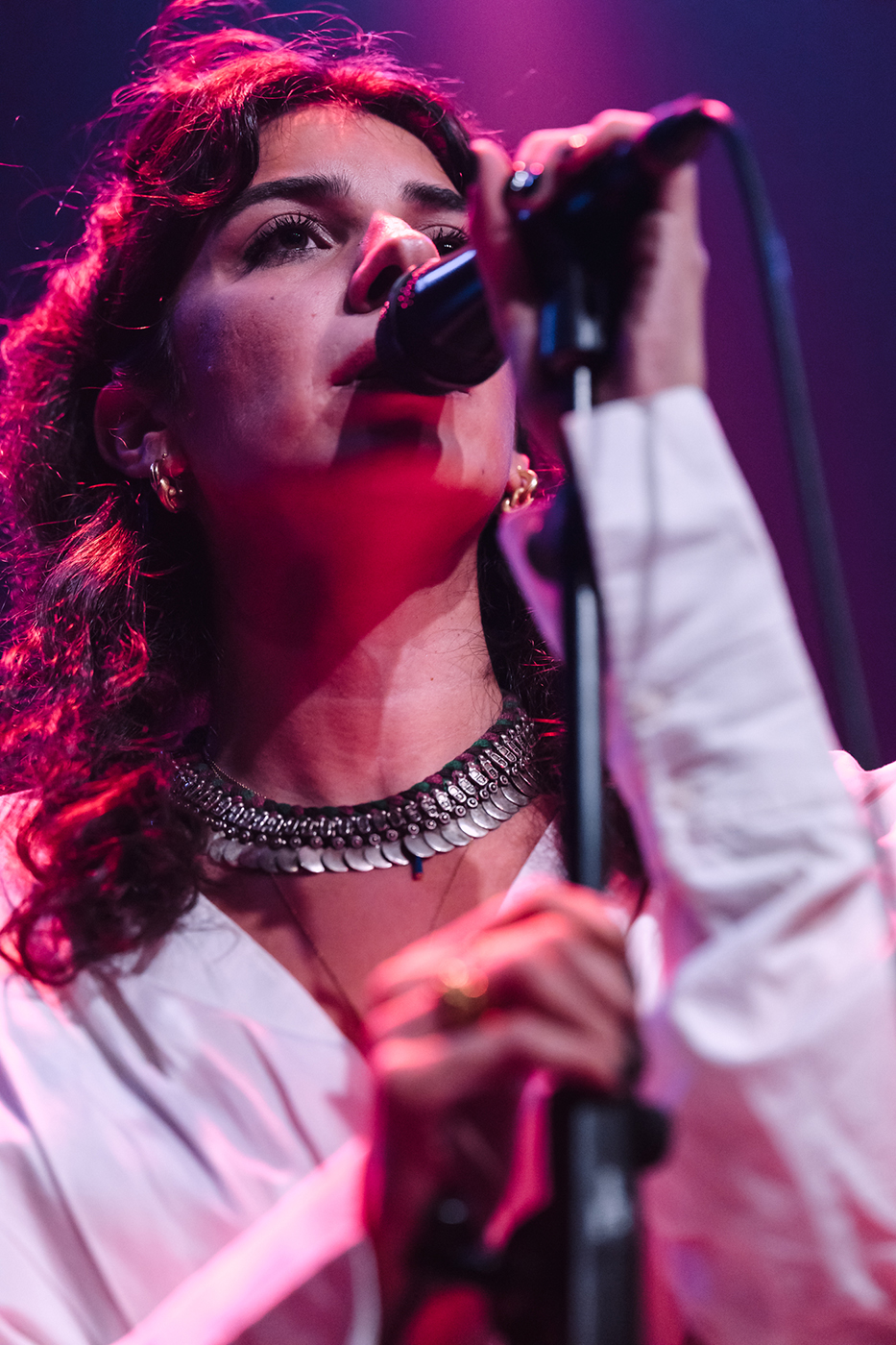
Chamoun was reading about a particular form of vocal and poetic expression within the Arabic oral tradition called "ritha' رثاء" (laments) which inspired the eponymous track "Sawt El-Dumouh"; "Ritha' means that you’re speaking when you're crying" elucidates Chamoun, "So I started writing. I tend to isolate myself and completely immerse myself in the topic that I’m working on. It's almost like I torture myself: I start looking into what I'm singing, what I can say, and maybe sometimes delving into my personal life doesn't mean anything to me, because something is eating us all up, so within this solo and in the one before, there’s a clear pattern where I'm between myself and agony, in order to get it all out."
As words transform into reverberating melodies of emotions, Chamoun's words transform into improvised vocal vibrations relying heavily on the throat and mouth cavities as sites of resonance. Chamoun clarifies that throughout her writing process, she likes to read the sentences aloud and sense them materialising around her; "For example in the song Shahed شاهد (witness) I decided to focus on the word "bahr بحر" (meaning sea). The plug-in helps me to multiply and unfold the word, making it splash around me." The song was inspired by a photo of a young boy from Gaza who was riding a horse in the sea, and so Chamoun engulfed herself in the concept of the sea in Gaza; "I started watching videos of people in Gaza and started asking: what does the sea mean to them? I tried to adapt my feelings, ideas and lyrics to what I was witnessing." The contemplative, hypnotic and trancey elements of "Shahed" are also manifested through rhythmic and percussive elements. Musically inspired by the Moroccan lamentations of Aytat Ali Hout deployed his percussive knowledge to unfold the different rhythms that Chamoun then layered and added her vocals to with sporadic interventions of the synth to evoke the sense of moving in water.
On "Ataba" which is a take on the Arabic poetic form of ataaba sometimes building on dirges, Chamoun also resorts to lengthening the voice and extending the words. Like the ebb and flow of the sea, her words fall on our eardrums and the silences in between are deliberate pauses to gain time between one draw of breath and the other. "I wanted the sonic reality of the track to swell heavily from every word. I also divided words into melodies" says Chamoun which helped her modulate her voice in novel ways.
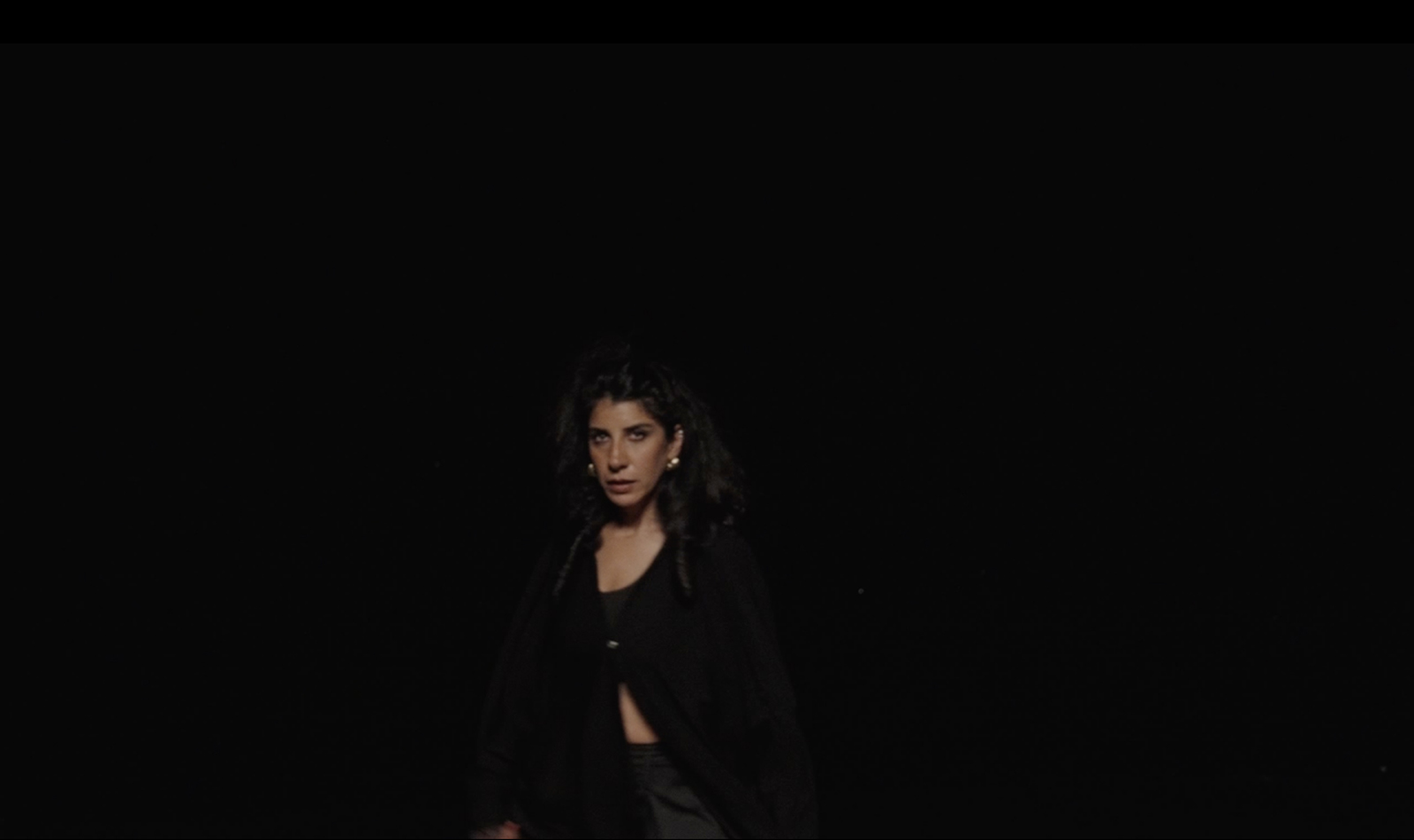
Another innovative technique is audible on "Khaify خفي" (hidden or invisible) where Chamoun's haunting and distant voice is sustained by alternate modulations between low, mid and high notes that she selects to reveal or hide emotions and stories of our unfolding times.
On one of the other songs "Wa و", which refers to the conjunctive "and", Chamoun juggles her lyrics with rhythmic beats, but also violins to evoke the sense of movement from one place to another: "I imagined a desert, and journeying through life. I love its words: they're very innocent and not necessarily deep: as though someone is telling a little girl that she’s going from a place to another and you'll love friends and foes, and you'll love mountains and rivers and at the end you'll travel and then you'll see the people whom you have known."
Perhaps the conjunctive of the "Wa و" with the rolling synths and the pulsating percussive beats that are throbbing with life are the connective tissue that we need during these times to overcome human victory over nature.
Ghadrغدر, curated by Amirtha Kidambi, and Sawt El Doumouh صوت الدموع, commissioned by Mophradat, will be performed live at Le Guess Who? 2025 on Friday 7 November.
